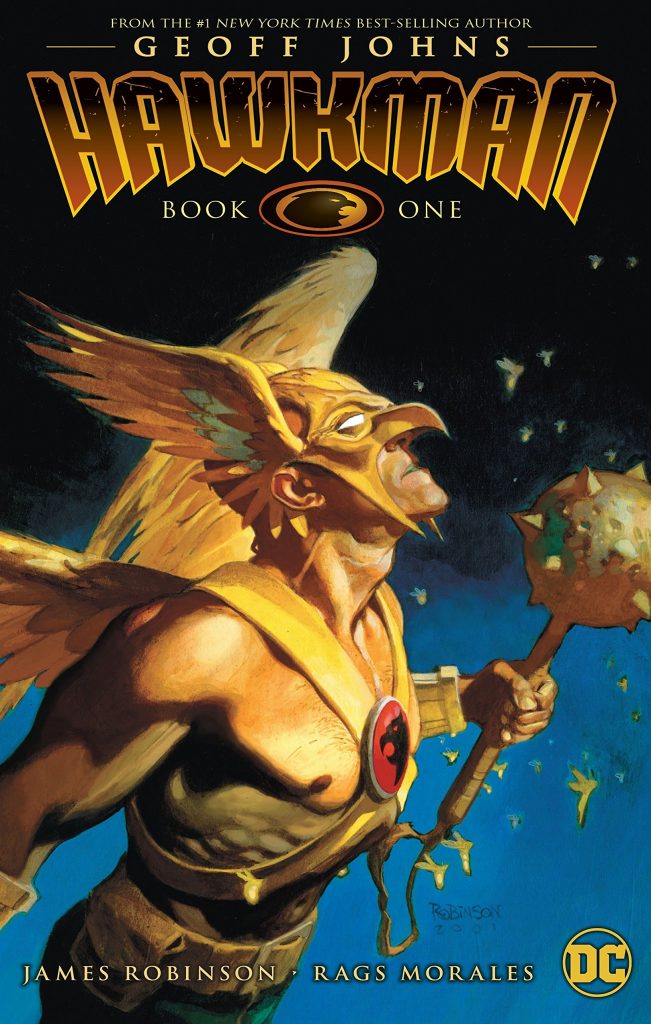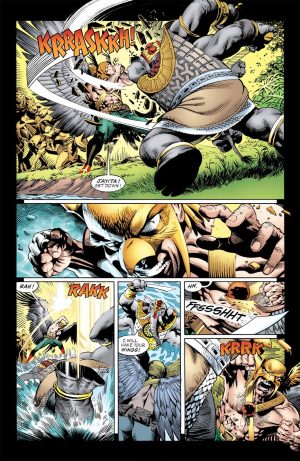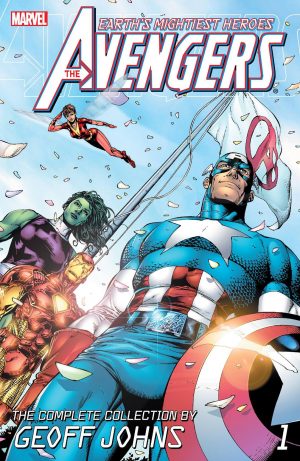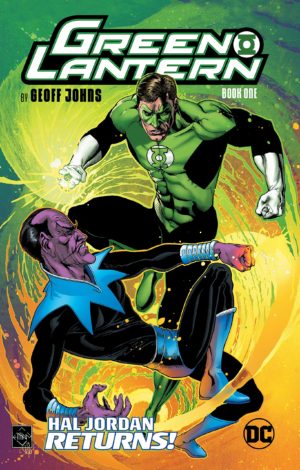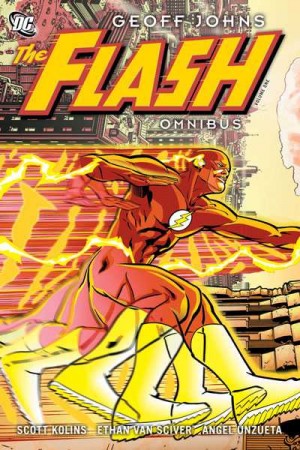Review by Ian Keogh
Hawkman was among DC’s earliest heroes, yet even by the 1960s a superhero whose only power was flight seemed dated, so he was reconstructed as an alien stranded on Earth earning a living as museum curator Carter Hall. Several subsequent attempts to reconcile past and previous existences just muddied the waters until Geoff Johns created a cohesive identity reborn every generation, having access to genetic memory. JSA: Return of Hawkman supplies the full account, and it’s that incarnation who stars here.
Despite the collection having Johns’ name, almost half of it is his scripting of material co-plotted with James Robinson, with Robinson contributing a solo Western alone. The other contradiction is that despite Hawkman being the title figure, so much of the plot is motivated by Hawkgirl, Kendra Saunders, investigating the murder of her parents, which occurred years previously. Historically Hawkman and Hawkgirl come as a loving couple, and the twist is in these identities Kendra rejects the overtures of Carter Hall, and cares nothing for his assurance that their love is predestined. Johns keeps this the right side of creepy stalking.
All the ingredients are there, and Rags Morales draws up a storm, but the opening four chapters don’t quite hit the mark. They do, however, set the template for what follows. There’s a respect for Hawkman’s history, use of the few villains he’s associated with, while the heroes with whom he has an unusual relationship are also featured. The reason Hawkman and Atom are a combination is down to their brief forced teaming when their titles were cancelled in the 1960s, yet Johns makes more sense of that relationship, and he progresses the combative grumblings with Green Arrow. Doctor Fate also stops by, his role pivotal in explaining something about Hawkman’s eternal nature. It’s also pleasing that Johns takes the time to consider the perennial strange logic of the past, such as how it is in that costume Hawkman isn’t frozen when flying.
Morales is major ingredient here, ensuring the action leaps from the pages and loving the design elements. He gets to draw Hindu gods, some old villains, and some great locations, Hawkman’s home city of St Roch very ornate and on a river. Designs for the new villains around the turn of the century are of their era, all fetish gear and attitude, but they’re not around for long.
This is a better purchase than the earlier Endless Flight and Allies & Enemies, which it combines, as the latter’s cliffhanger ending was never presented in a collection. It features Ethan Van Sciver’s pencils on the first chapter and the equally good Don Kramer on the second, and more astute readers will have already picked up the clues revealing the guilty party. However, it becomes more interesting than wrapping up the mystery of who killed Kendra’s parents, Johns adding a neat twist to another old enemy of Hawkman’s. The way this is handled renews the character and makes them more dangerous.
It takes Johns a while to settle in, and it’s strange to note a series from this era as being better without Robinson’s input. However, it’s not until the final chapters when everything pulls together that we’re getting Johns really flying high. In the meantime it’s marginally better than the genre average, but not quite the full Johns experience. All his work on the character is combined in Geoff Johns Hawkman Omnibus, otherwise a second bulky paperback supplies the remainder of the series.
